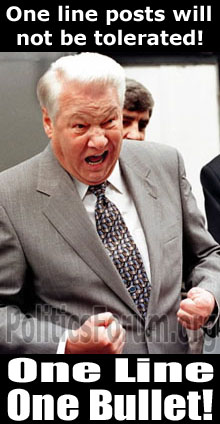- 04 Apr 2017 11:15
#14793453
Is there an inherent meaning to a piece of artwork? Such as a painting or a novel.
If there is an inherent/true meaning, does it form upon it's production or consumption?
If there is no inherent/true meaning, how is there coherent and shared meanings as opposed to a multitude of superfluous subjective interpretations?
If there is an inherent/true meaning, does it form upon it's production or consumption?
If there is no inherent/true meaning, how is there coherent and shared meanings as opposed to a multitude of superfluous subjective interpretations?
Spoiler: show
These are excerpts that I think are interesting and seem somewhat relevant to these questions and might be interesting perspectives for others. But it's necessary for answering the questions other than I believe these to be compelling and interesting perspectives and might help develop one's own perspective.
Source - John Storey - Cultural Theory and Popular Culture: An Introduction, 5th edition
p. 69
p. 74
p. 126 Post-Structuralism
See Jacques Derrida p. 126-128
Nice simple summary by Rick Roderick: 307 Derrida and the Ends of Man
Feliks Mikhailov - The Riddle of the Self - CHAPTER THREE MAN AND HIS THOUGHT
Source - John Storey - Cultural Theory and Popular Culture: An Introduction, 5th edition
p. 69
Whereas Adorno locates meaning in the mode of production (how a cultural text is produced determines its consumption and significance), Benjamin suggests that meaning is produced at the moment of consumption; significance is determined by the process of consumption, regardless of the mode of production.
p. 74
In his elaboration of Althusser’s method of symptomatic reading, he rejects what he calls ‘the interpretative fallacy’: the view that a text has a single meaning which it is the task of criticism to uncover. For him the text is not a puzzle that conceals a meaning; it is a construction with a multiplicity of meanings. To ‘explain’ a text is to recognize this. To do so it is necessary to break with the idea that a text is a harmonious unity, spiralling forth from a moment of overwhelming intentionality. Against this, he claims that the literary text is ‘decentred’; it is incomplete in itself. To say this does not mean that something needs to be added in order to make it whole. His point is that all literary texts are ‘decentred’ (not centred on an authorial intention) in the specific sense that they consist of a confrontation between several discourses: explicit, implicit, present and absent. The task of critical practice is not, therefore, the attempt to measure and evaluate a text’s coherence, its harmonious totality, its aesthetic unity, but instead to explain the disparities in the text that point to a conflict of meanings.
p. 126 Post-Structuralism
Post-structuralists reject the idea of an underlying structure upon which meaning can rest secure and guaranteed. Meaning is always in process. What we call the ‘meaning’ of a text is only ever a momentary stop in a continuing flow of interpretations following interpretations. Saussure, as we have noted, posited language as consisting of the relationship between the signifier, signified and the sign. The theorists of poststructuralism suggest that the situation is more complex than this: signifiers do not produce signifieds, they produce more signifiers. Meaning as a result is a very unstable thing. In ‘The death of the author’, the now post-structuralist Barthes (1977c) insists that a text is ‘a multi dimensional space in which a variety of writings, none of them original, blend and clash. The text is a tissue of quotations drawn from the innumerable centres of culture’ (146). Only a reader can bring a temporary unity to a text. Unlike the work that can be seen lying in apparent completion on library shelves and in bookshops, the text ‘is experienced only in an activity of production’ (157). A text is a work seen as inseparable from the active process of its many readings.
See Jacques Derrida p. 126-128
Nice simple summary by Rick Roderick: 307 Derrida and the Ends of Man
This is another important part of Derrida’s take on language and language practices; the idea that there could be the right interpretation. In a way there is no more powerful idea in the discipline of philosophy than the idea that there could be the right interpretation. After all it’s that idea that allows us to give our student B’s and C’s as opposed to the A’s we would make if we had written the paper. It’s what keeps us – it seems – continually to read Aristotle and so on, in order to get them right, finally.
Derrida makes the outrageous claim that in the last analysis there is no such thing as the right reading; the right interpretation. There is no interpretation that can bring interpretation to an end. Good books, really great texts, do not cut off interpretation; they lead to multiple interpretations. Great examples of this would be The Bible, which I think it’s pretty obvious has not yet reached closure on interpretation. I mean, you know, I grew up in a community where there were Baptists, Methodists, Church of Christ. Took me a while to get into the city and meet Jewish people, Muslims, others. It became clear to me that reading the Old Testament; was difficult to come up with The Right Interpretation, and what was wrong was the very idea that there could be the right interpretation.
Now the converse is the claim that people find outrageous, but it’s not made by Derrida. That means that since there is no “the right way”, then any way is as good as any other. Now Derrida is not compelled to hold that view and he doesn’t. Not every way to speak and/or read is as good as any other! And let me just put it simply: no-one holds that view. Derrida, to the extent that he refuses to play a standard philosophical game just will not play. The fact that there is no final book, you know, one last master encyclopaedia containing all the wisdom, total coverage, final knowledge, the last book, none other ever needs to be written, Derrida considers that a reductio ad absurdum of the idea of perfect interpretation; the right interpretation.
This does not at all mean that we don’t in loose, rough and ready ways judge interpretations… all the time. And this does not at all mean that practically speaking that some interpretations are obviously slightly better than others. Let me return to familiar ones like the traffic light. If it’s red and you see it as green, the outcome can be disastrous; Derrida doesn’t deny it. You know, it’s a bad misreading… bad misreading. But this is a familiar mistake and it is made about a lot of Derrida’s work. Philosophers call someone a relativist by which they mean it’s a person that holds that any view is as good as any other view. My simple response to that is this: that is a straw person argument, no-one in the world believes it or ever has believed it.
No-one – Derrida or anyone else – believes that every view is as good as every other view. That’s only a view we discuss in freshman philosophy class in order to quickly refute it. I mean no-one believes it. There are no defenders of the view and since this tape will be going out, if we run into one it will be interesting, but we will likely find that person in one of the institutions Foucault discussed rather than in some seminar, okay. That’s where we will find them, if anybody believes that. No, Derrida’s kind of slippage is to remind us that the text of philosophy is not fixed; can not be fixed. It is of the nature of the text of philosophy and its relation to language that we cannot fix it once and for all. In a way it’s like the leaky ship where we haven’t got anything to stop the leak so we just keep bailing. I mean, the leak is in the language.
Feliks Mikhailov - The Riddle of the Self - CHAPTER THREE MAN AND HIS THOUGHT
In full accord with the long tradition of empiricism Bertrand Russell held that the social (universal) significance of the word “rain” was the result of abstraction (induction, building of inference) from the individual particulars of perception. For him it is social “depersonalised” language that strips rain of its individual perceptual peculiarities and keeps in the meaning of the word only that which is repeated in an autumn drizzle and a tropical downpour. But we see that a word contains the universal (our Something) in its meaning because it serves us as a means of intercourse, “doing things” in relation to rain, when we shelter together from the rain, pray for rain, study the possibility of preventing it or making it by artificial means. In all these cases the ways and means of our intercourse and activity (particularly language) establish not the mere sensations that are personally unique or the same as everyone else’s, but the meaning of real rain for our life-activity, its objective role in our social and personal lives, the role it plays precisely because it is rain, because this is its objective essence that does not depend on us. And it is for this reason that our “initial”, apparently direct perception which Russell took as the sensuous individual basis of all human experience, is itself guided and filled out by the universal meaning of the ways and means of intercourse and activity that we have learned (this is the idea behind Marx’s thesis that our senses become theoreticians).
...
This can also be stated in another way. Thought means constantly organising and checking one’s life-activity, one’s being, with the help of the historical means of intercourse (particularly language), whose social form reveals and establishes the objective properties of nature and social relations. To be (a human being) means transforming in the process of joint instrumental activity the objective forces of nature into modes of one’s life-activity, and thus into the socially significant content of one’s thought.
Thus, people’s objectified activity as the historically developing mode of their life is their social being, and this is what determines man’s social consciousness, mode of individual being, and individual consciousness. Consequently, thought itself is, like the organisation of the body, its very existence, abilities, etc., a result and moment of people’s joint objectified activity. Individual being and thinking are not even two sides of the same medal. Rather they are manifestations of the individual’s whole mode of life and the difference between them is not given primordially but develops historically. Man himself noticed this difference (later to become a contradiction) only when the integral mode of social, historical activity in the course of its development generated and gave social form to separated mental and material production (thus opposing one to the other).
https://www.ethicalpolitics.org/ablunden/pdfs/For%20Ethical%20Politics.pdf#page90
-For Ethical Politics
-For Ethical Politics














 - By Fasces
- By Fasces - By JohnRawls
- By JohnRawls